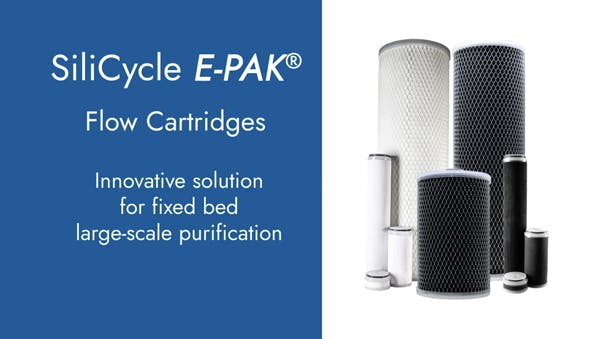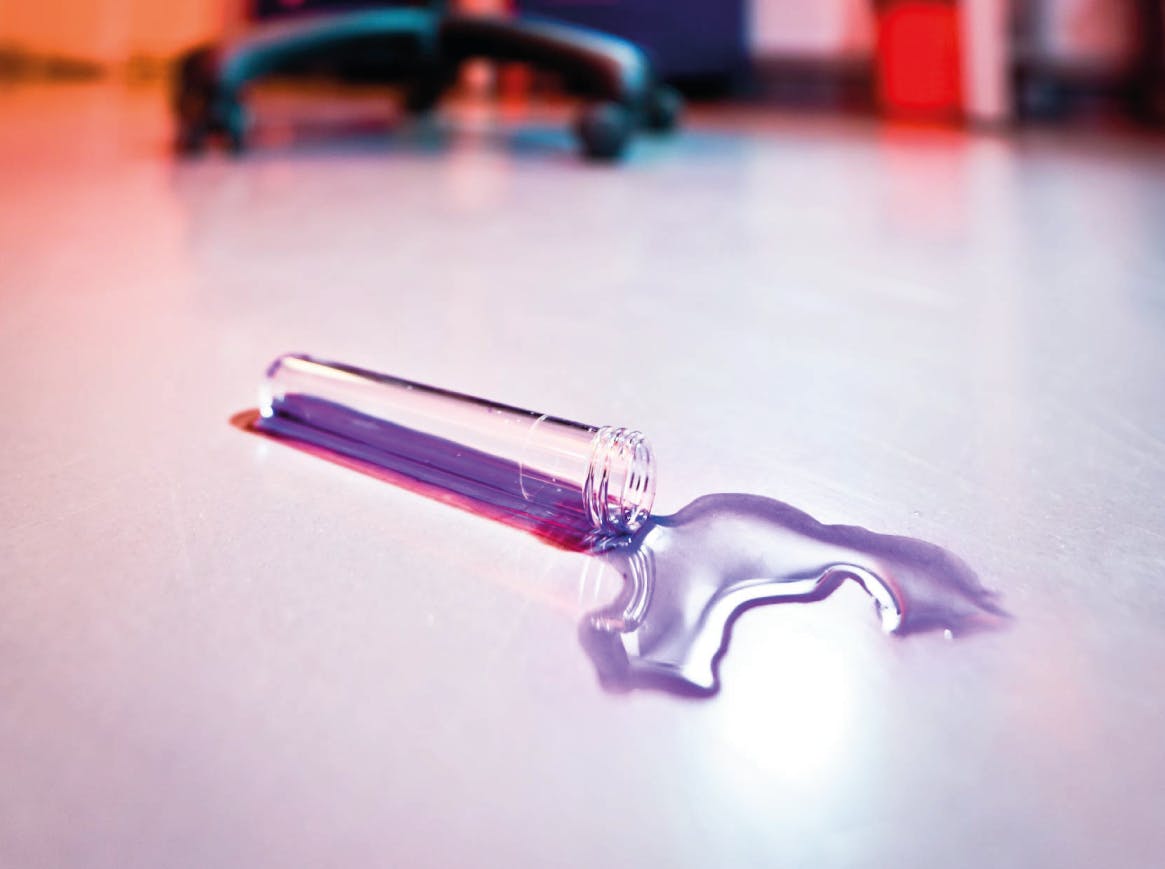
25 May 2023
Who invented the C18 Column?

By Gilles Beck
Why is it that the inventor(s) of C18 columns, which occupy a significant position in reverse-phase chromatography, are not widely recognized by the public?
I recently found myself facing a version of this question again and was unable to answer despite conducting initial research. Given the importance of C18 columns in reverse-phase chromatography, it seemed perplexing that the inventor(s) remained unknown to the public. The Internet was filled with conflicting information on the topic, and even ChatGPT couldn't provide a satisfactory response; in fact, its answer was quite misleading. A few years ago, during a conversation with experienced analysts in Runcorn, I had been led to believe that the story behind C18 columns was uniquely British, with the North-West of England playing a significant role. However, in digging into the truth, I was in for a surprise.
This time, I decided to approach the task more seriously and delved into the remarkable decade for liquid chromatography—the 1960s. While John Lennon sang "Revolution" and university campuses across the West staged sit-ins to protest the Vietnam War, pioneering chemists were making monthly innovations that would leave a lasting impact on separation sciences. Embarking on a historical journey, I immersed myself in the early papers on high-performance liquid chromatography (HPLC).
Until the late 1960s, not much had changed in the field of chromatography since Russian botanist Mikhail Tswett's first separation of plant pigments in 1900. Well, that's not entirely true. In the 1940s, paper chromatography was developed for separating amino acids [1]. Gas chromatography (GC) instruments emerged in the 1950s, allowing the separation of volatile compounds, but they had limitations when it came to non-volatile or thermolabile analytes. During the 1950s and early 1960s, analysts still relied on wide glass columns packed with normal phase (polar) sorbents, where gravity was the driving force for solvent flow. However, it was already understood that smaller, more efficient particles would generate higher pressure drops and lead to higher efficiencies [2]. In the mid-1960s, polymers could be separated based on their size using porous silicas in a technique called gel permeation chromatography (GPC). Analysts often assembled modules from different manufacturers and created their own instruments, incorporating the latest innovations: a better pump here, a refractometer or a more sensitive UV detector there, or an injection valve. It is now widely accepted that the first HPLC system was created by Horvarth and Lipsky at Yale University in 1966 and 1967 to separate nucleic acids through an ion-exchange mechanism [3; 4]. The model was later sold as a nucleic acid analyser. However, it's worth mentioning that European pioneers like Josef Huber at the University of Eindhoven may have been using HPLCs since 1964 [2].
But let's return to our initial question: what about the columns? In the Netherlands, Huber employed diatomaceous earth particles as the sorbent [2]. The packing material used by Horvarth and Lipsky was pellicular (now known as superficially porous), and the stationary phase consisted of glass beads coated with a thin layer of ionized styrene-divinylbenzene [3]. A major limitation was the relatively low surface area of the sorbent and poor analyte retention. And coated stationary phases were easily washed away by solvents.
Chemically bonded stationary phases were already being developed at the time for GC applications. Various solid surfaces had already been modified with DMCS and trimethyl chlorosilanes to render them more inert (1966). However, most early bonded phases were polar, such as bentone-34, 3-hydroxypropionitrile, octanol, and PEGs. In 1966, Abel et al. from the University of Bristol described a new gas-liquid chromatographic phase called "hexadecyl" (C16) [5]. Progress was being made! But it is Stewart and Perry (Esso Research Centre, Abingdon) that must be credited for suggesting in 1968 that octadecylchlorosilane (C18) would make a useful stationary phase for LC (6). While they failed to recognize the commercial potential of their idea, they acknowledged that “that a family of anchored phases offers the best […] present possibility for liquid-liquid chromatography of lipophilic mixtures…” [7]. Interestingly, nonpolar stationary phases were primarily considered suitable for the exclusive separation of hydrocarbons and lipids at the time [6, 7]. The substrate used in their work was a form of diatomaceous earth called "kieselguhr," and the resulting stationary phase “consists essentially of a skin of alkyl groups on the kieselguhr”. The authors emphasized that this organic matter "fur" could withstand prolonged extraction or washing with hydrocarbon organic solvents. However, they failed to realize that excellent separations could be achieved by using rather polar solvents with their recent non-polar product (a crucial aspect of reverse-phase HPLC). On the contrary, they predicted that “where truly immiscible phase pairs are used, it is not surprising that separations are often poor. This is because immiscible phase pairs differ very considerably in polarity (e.g. water-hexane) and sample components tend to have partition coefficients in such a system tending either to zero or infinity.” Stewart and Perry also anticipated that bonding differently substituted silanes and that “other solids such as silica gel or alumina will also modify the polarity of anchored phases”. This idea was soon to be put into practice [8] and within years, there was a dramatic shift in this nascent HPLC world.
Normal phase chromatography was nearly wiped out, and by 1976, up to 80% of all HPLC applications were performed on various commercial silica-based C18 columns, including DuPont Permaphase ODS (1970), Waters Bondapak (1972), and Vydac Reversed-phase [9]. By the mid-1970s, bonded C18 phases, along with the first commercial HPLC instruments (such as Picker Nuclear LCS-1000, 1967; Waters ALC-100, 1967; DuPont 820, 1969; Varian LC5000, 1977), and typical reverse-phase solvent systems (water/aqueous buffers, methanol, acetonitrile), had propelled the technique to its present-day form [10].
References
(1) Consden, Gordon and Martin (1944), Qualitative Analysis of Proteins: a Partition Chromatographic Method Using Paper, Biochem J Vol. 38, pp 224-232
(2) Henry (2009), The Early Days of HPLC at DuPont, LCGC North America, Vol. 27 pp 146-153
(3) Horvath and Lipsky (1966), Use of Liquid Ion Exchange Chromatography for the Separation of Organic Compounds, Nature, Vol. 211, pp 748-749
(4) Horvath, Preiss and Lipsky (1967), Fast Liquid Chromatography: an Investigation of Operating Parameters and the Separation of Nucleotides on Pellicular Ion Exchangers, Analytical Chemistry, Vol. 39, 1422
(5) Abel et al (1966), A New Gas-Liquid Chromatographic Phase, Journal of Chromatography, Vol. 22, pp 23-28
(6) Stewart and Perry (1968), A New Approach to Liquid Partition Chromatography, Journal of Chromatography, Vol. 37, pp 97-98
(7) Hovarth, Melander and Molnar (1976), Solvophobic Interactions in Liquid Chromatography with Nonpolar Stationary Phases, Journal of Chromatography, Vol. 125, pp 129-156
(8) Kirkland and DeStefano (1970), Controlled Surface Porosity Supports with Chemically-Bonded Organic Stationary Phases for Gas and Liquid Chromatography, Journal of Chromatographic Science, Vol.8, pp 309-314
(9) Locke (1973) Chemically Bonded Stationary Phases for Liquid Chromatography, Journal of Chromatographic Science, Vol.11, pp 120-128
(10) Majors and Baltrus (2020), The Top 10 Game Changers in HPLC History, the Analytical Scientist






